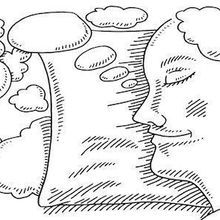REM sleep

Groundbreaking Sleep Researcher J. Allan Hobson Dies at 88
Lisa Winter | Jul 29, 2021 | 2 min read
He famously contradicted Sigmund Freud’s views on the meaning of dreams.

Researchers Exchange Messages with Dreamers
Asher Jones | Feb 18, 2021 | 5 min read
Dreamers answered experimenters’ questions or solved simple math problems, showing that complex two-way communication between the dreaming and waking world is possible.

Infographic: The Technology Scientists Use to Engineer Dreams
Catherine Offord | Dec 1, 2020 | 1 min read
Researchers are experimenting with a variety of tools, from brain stimulation to audiovisual equipment, to try to take control of the sleeping brain.

Scientists Engineer Dreams to Understand the Sleeping Brain
Catherine Offord | Dec 1, 2020 | 10+ min read
Technologies such as noninvasive brain stimulation and virtual reality gaming offer insights into how dreams arise and what functions they might serve.

Adult-Born Neurons Strengthen Memories While Mice Sleep
Ruth Williams | Jun 4, 2020 | 3 min read
The activation of young brain cells in adult mice is necessary not just for forming memories, but consolidating them during rapid eye movement sleep, a study shows.

Karaoke-Sleep Study Links Disrupted REM With Poor Memory Processing
Katarina Zimmer | Jul 11, 2019 | 5 min read
An unusual experiment suggests that interrupted REM sleep can interfere with the amygdala’s ability to process emotional memories overnight—in this case, the distressing memories of listening to oneself sing out of tune.

Image of the Day: Mouse Pupil
The Scientist and The Scientist Staff | Jan 19, 2018 | 1 min read
Pupil constriction during sleep may protect the murine brain from being awakened by sudden flashes of light.

Growth-Promoting Protein Linked to REM Sleep in Rats
Shawna Williams | Nov 11, 2017 | 2 min read
Brain-derived neurotrophic factor affects onset and duration of REM in the animals, but not other phases of sleep.

The Sleeping Brain Can Learn
Diana Kwon | Aug 8, 2017 | 3 min read
Humans can remember new sensory information presented during REM sleep, but this ability is suppressed during deep, slow-wave slumber.

Scientists Identify More-Precise Neural Correlates of Dreaming
Ashley P. Taylor | Apr 10, 2017 | 3 min read
By examining brainwave patterns in a posterior cortical area, scientists can predict when people are dreaming.

Examining Sleep’s Roles in Memory and Learning
Ashley P. Taylor | Jun 13, 2016 | 3 min read
Autonomic nervous system activity during sleep may help explain variation in the extent to which the behavior aids memory consolidation, a study shows.

The A B Zzzzs
The Scientist | Mar 1, 2016 | 2 min read
An overview of the human sleep cycle

Perchance to Dream
Karen Zusi | Mar 1, 2016 | 4 min read
Mapping the dreaming brain through neuroimaging and studies of brain damage

Who Sleeps?
The Scientist and Jerome Siegel | Mar 1, 2016 | 10+ min read
Once believed to be unique to birds and mammals, sleep is found across the metazoan kingdom. Some animals, it seems, can’t live without it, though no one knows exactly why.

Powering Down
Tracy Vence | Dec 23, 2014 | 1 min read
People who read from light-emitting electronic devices before bedtime may suffer poorer-quality sleep, researchers show.

Controlling Self-Awareness During Sleep
Anna Azvolinsky | May 11, 2014 | 3 min read
Changing neural activity in the frontal and temporal lobes of the brain can cause a sleeper to become aware of her dreaming state, a study shows.

Sleep Protection
Kerry Grens | Mar 1, 2013 | 2 min read
Inducing certain brain patterns extends non-REM sleep in mice.
